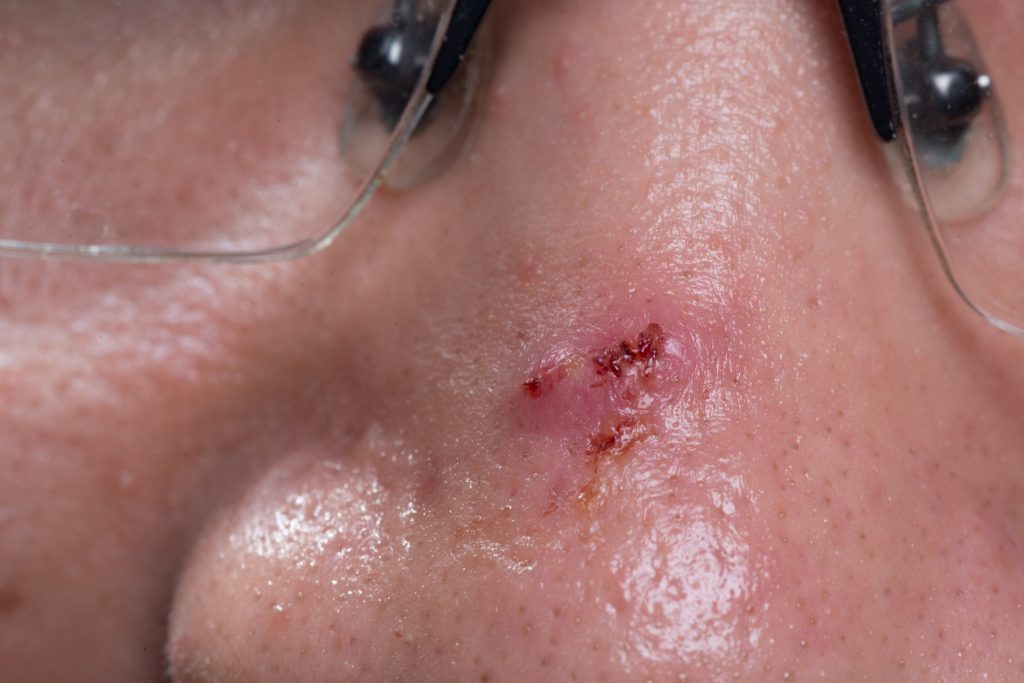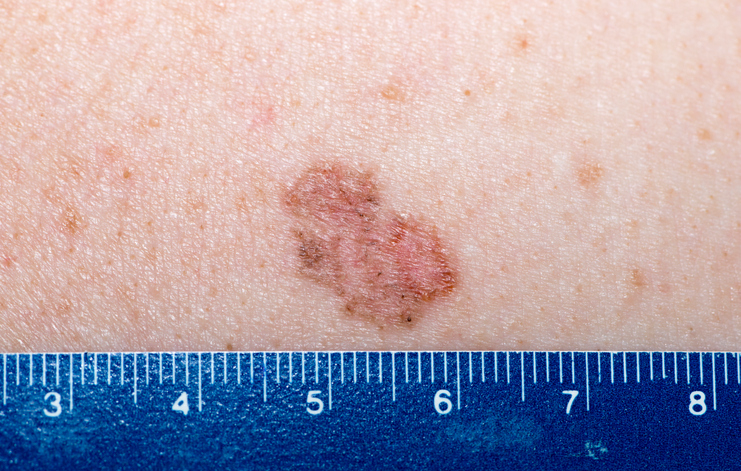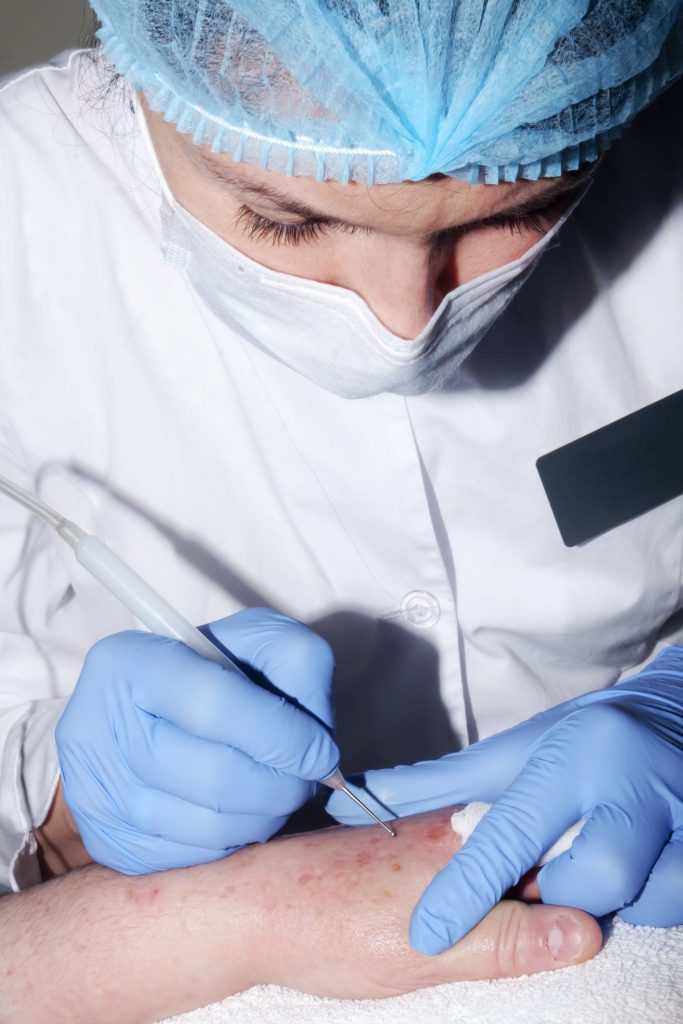Basal Cell Carcinoma Treatments from U.S. Dermatology Partners
What Is Basal Cell Carcinoma?
Basal Cell Carcinoma, also known as basalioma or basal cell cancer, is the most common type of skin cancer and carries the least amount of risk, though it still requires attention. If caught and treated early, basal cell carcinomas are not likely to be life-threatening, but they do have the potential to cause disfigurement of the skin tissue.
Almost one million new cases of basal cell carcinoma are diagnosed each year in the U.S., and up to 30% of Caucasians may develop basal cell carcinomas in their lifetime.

Basal cell carcinoma can be treated by removing the affected area.
Skin cancer is considered low risk when the affected cells remain clustered in a single group. Both basal cell carcinoma and squamous cell carcinoma are rarely life-threatening. Though it is unlikely to spread to other parts of your body, if left untreated, basal cell carcinoma can move into nearby bone or other tissue.
Basal cell carcinoma typically begins as a small, shiny bump on the face, although it can occur on any part of the body.
Find This Service Near You
Who Is at Risk for Basal Cell Carcinoma?

Basal cell carcinoma often affects the skin on or around the face.
More than 90 percent of all skin cancer is caused by long-term exposure to UV radiation. Thus, basal cell carcinoma is more common in people who spend long hours outside, whether for work or play, and in anyone with a long history of sun exposure. As with other forms of skin cancer, those with fair skin, blond hair and light-colored eyes are also at a greater risk.
Although the number of incidents of basal cell carcinoma used to be higher with men, today more women are reporting cases. Incidents of basal cell carcinoma are most likely in people over 50, but can also begin appearing as early as the teenage years.
Basal Cell Carcinoma Symptoms
There is no single “look” for basal cell carcinoma. Lesions can be pink, black or brown, or look like a shiny pink or red patch on your skin. Sometimes, it looks like a flesh-colored mole. One main characteristic of basal cell carcinomas is that they tend to be fragile and can bleed easily.

Basal cell carcinomas can have many appearances, such as this pigmented superficial type basal cell carcinoma.
Basal Cell Carcinoma Treatments
Basal cell carcinoma can be treated in several different ways depending on the size of the cancer, its location, how long you have had the tumor and how much scarring is likely to occur with each treatment.
Options for treating basal cell carcinoma include:
- Cryosurgery
, in which the lesion is frozen with liquid nitrogen
- Curettage, in which the skin cancer is removed by scraping the area with a sharp looped-edged instrument called a curette. The cancerous area is then treated with an electrocautery needle to destroy any remaining cancer cells and help control bleeding. This process may be repeated a few times with a deeper layer of tissue being scraped and cauterized each time to help destroy all of the cancer cells.
- Simple excision, in which the cancerous tissue and some surrounding healthy skin is cut out.
- Mohs surgery. This is a procedure in which your doctor removes the cancer layer by layer and examines each layer under the microscope until no abnormal cells remain.
- Radiation therapy, which uses high-energy beams such as X-rays to kill cancer cells. This is more common for deeper tumors.
If the cancer has spread to other parts of your body, or if it has come back after surgery, your doctor may prescribe certain medications. In some cases, your doctor may also recommend the use of a prescription cream for several weeks.
If you are diagnosed with basal cell carcinoma, your dermatologist will discuss options with you to determine the best treatment plan.
Basal Cell Carcinoma Prevention

The best way to prevent skin cancer is to protect your skin from sunlight.
Although treatments are very successful when skin cancer is caught early, the best way to prevent skin cancer is to protect your skin from sunlight. Make smart sun habits a part of your daily healthcare regimen.
- Limit the amount of time spent outdoors during peak sun hours (10:00 AM to 4:00 PM).
- Avoid tanning booths and sunburn.
- Wear a broad spectrum (UVA/UVB) sunscreen with an SPF of 15+ every day.
- For extended outdoor activity, use a water-resistant, broad spectrum sunscreen with an SPF of 30+.
- When outside, cover up with long pants, a long-sleeved shirt, a broad-brimmed hat and UV-blocking sunglasses.
- Check your skin head-to-toe every month.
- See your dermatologist every year for an annual skin examination.
*Results may vary by individual

